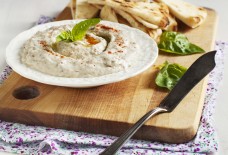When an Arab Enclave Thrived Downtown
Conjure, for a moment, a place just steps from City Hall but a world apart. Salaam.
Yes, that is the fragrance of strong coffee in the air, of sweet figs and tart lemons, of pastries that remind buyers of childhoods in Damascus and Beirut. Bazaars abound with handmade rugs and brass lamps and water pipes. Men wear fezzes. A few women retire behind veils. Al-Hoda is the leading newspaper. Business signs — at least those legible to a non-Arabic speaker — proclaim “Rahaim & Malhami,” “Noor & Maloof” and “Sahadi Bros.”
This is not what the lower west side of Manhattan would look like if the much-debated Islamic community center were built two blocks from the World Trade Center site. This is what it looked like decades before the World Trade Center was even envisioned. This is its heritage.
All but lost to living memory and forgotten in the current controversy, Washington Street was the “heart of New York’s Arab world,” as The New York Times described it in 1946, shortly before that Arab-American community was almost entirely displaced by construction of entrance ramps to the Brooklyn-Battery Tunnel.
To be clear: this neighborhood, called Little Syria, was south of what would become the trade center site, while the Islamic center would be to the north. And Muslims, chiefly from Palestine, made up perhaps 5 percent of its population. The Syrians and Lebanese in the neighborhood were mostly Christian.
But it is worth recalling the old sights and sounds and smells of Washington Street as a reminder that in New York — a city as densely layered as baklava — no one has a definitive claim on any part of town, and history can turn up some unexpected people in surprising places. (The Abyssinian Baptist Church, for instance, was once on Waverly Place.)
Washington Street was “an enclave in the New World where Arabs first peddled goods, worked in sweatshops, lived in tenements and hung their own signs on stores,” Gregory Orfalea wrote in “The Arab Americans” (Olive Branch Press, 2006). Among them was Mr. Orfalea’s grandmother Nazera Jabaly Orfalea, who arrived in New York from Syria in 1890.
“She would have walked Washington Street,” he said in an interview. “She was a peddler. I have no doubt she was grubstaked by suppliers on Washington Street.”
Mr. Orfalea attributed the migration of Syrians, Lebanese and Palestinians to starvation, lawlessness, conscription, taxation and religious intolerance at home; to proselytizing by American missionaries; and to economic troubles that led them to a new world where cultures existed, sometimes bruisingly, cheek by jowl.
“The calls in Arabic of the mothers to their children romping on the street mingle with the jazz screechings from another home and the Homeric curses of the truck-drivers on their way to the wharves,” Konrad Bercovici wrote in the 1924 book, “Around the World in New York,” with a nod toward the nearby Greek settlement of Little Athens.
Little Syria was where the Linotype typesetting machine was adopted for Arabic characters, by the brothers Naoum and Salloum Mokarzel of Al-Hoda (The Guidance). This development “made possible and immeasurably stimulated the growth of Arabic journalism in the Middle East,” The New York Times wrote in 1948.
But the presence of the intelligentsia in the quarter was no bulwark against stereotype. A neighborhood brawl in 1905 was fought by “wild-eyed Syrians,” The Times reported. “The dim light from barroom and cafe showed the glint of steel in 200 swarthy hands.”
Mr. Orfalea discerned parallels with the present controversy. “We fail to deal with the Arab world in rational terms,” he said, “because we immediately reduce them to the irrational.”
Historical accounts describe no mosques on Washington Street, but there were three churches that served the Lebanese and Syrian Christians.
St. George Chapel of the Melkite Rite still stands, at 103 Washington Street. It may be the last recognizable remnant of Little Syria. It is now Moran’s Ale House and Grill.
David W. Dunlap
New York Times


